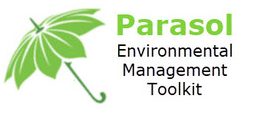Environmental Management Toolkit

An Environmental Management Toolkit is a set of resources, tools, and templates designed to help organizations manage their environmental performance and meet their environmental objectives. These toolkits can vary in content and scope but typically include guidance on environmental management systems, compliance requirements, best practices, and other relevant information. Environmental Management Toolkits can be developed by various organizations such as government agencies, non-profit organizations, and private companies, and can be tailored to specific industries or sectors. The purpose of an Environmental Management Toolkit is to provide organizations with a comprehensive set of resources to improve their environmental performance and achieve their sustainability goals.
Environmental Management System (EMS) Implementation
Implementing an Environmental Management System (EMS) involves a structured approach to managing an organization’s environmental impacts and improving its environmental performance. The implementation process typically follows the Plan-Do-Check-Act (PDCA) cycle, which is a continuous improvement model used in quality management and other business management systems.
What is an EMS?
Environmental management systems (EMS) are a set of processes and practices that organizations use to manage their environmental impacts and ensure compliance with environmental regulations. EMS can help organizations to reduce their environmental footprint, improve their environmental performance, and enhance their reputation.
EMS can be tailored to fit the needs of any organization, regardless of size or industry. The most common EMS standard is ISO 14001, which provides a framework for organizations to develop and implement an EMS. However, there are many other EMS standards and guidelines, such as the European Union’s Eco-Management and Audit Scheme (EMAS) and the Global Reporting Initiative (GRI).
An EMS, short for Environmental Management System, is a framework designed to assist organizations in achieving their environmental objectives by consistently reviewing, evaluating, and improving their environmental performance. The Plan, Do, Check, Act circular image outlines the steps involved in developing and maintaining an EMS.
While an EMS does not mandate a specific level of environmental performance, it is customized to each organization’s unique goals and targets. Implementing an EMS can help organizations address regulatory requirements systematically and cost-effectively, reducing the risk of non-compliance and improving employee and public health and safety. It can also promote stronger operational control, energy conservation, and employee stewardship.
Basic EMS
An EMS helps an organization address its regulatory requirements in a systematic and cost-effective manner. This proactive approach can help reduce the risk of non-compliance and improve health and safety practices for employees and the public. An EMS can also help address non-regulated issues, such as energy conservation, and can promote stronger operational control and employee stewardship. Basic Elements of an EMS include the following:
- Reviewing the organization’s environmental goals;
- Analyzing its environmental impacts and compliance obligations (or legal and other requirements);
- Setting environmental objectives and targets to reduce environmental impacts and conform with compliance obligations;
- Establishing programs to meet these objectives and targets;
- Monitoring and measuring progress in achieving the objectives;
- Ensuring employees’ environmental awareness and competence; and,
- Reviewing progress of the EMS and achieving improvements.
Why implement an EMS?
Organizations may choose to implement an EMS for a variety of reasons, such as to:

- Reduce environmental impacts: EMS can help organizations to identify and prioritize their environmental impacts, and implement measures to reduce them. This can lead to cost savings, improved efficiency, and reduced risk of non-compliance.
- Enhance reputation: A strong environmental performance can enhance an organization’s reputation and build trust with stakeholders, including customers, investors, and regulators.
- Ensure compliance: EMS can help organizations to ensure compliance with environmental regulations and minimize the risk of fines, penalties, and legal action.
- Improve sustainability: EMS can help organizations to align their operations with sustainability principles and contribute to a more sustainable future.
- Drive continuous improvement: EMS can provide a structured approach to identifying and implementing improvements, which can lead to ongoing environmental and operational improvements.
How to implement an EMS?
The process of implementing an EMS typically involves the following steps:
- Establish the context: The first step is to identify the organization’s environmental context, including its environmental impacts, stakeholders, and regulatory requirements.
- Develop a policy: The organization should develop an environmental policy that outlines its commitment to environmental performance, as well as its objectives and targets for improvement.
- Plan and implement: The organization should develop and implement a plan to achieve its objectives and targets, including the development of procedures, guidelines, and training programs.
- Monitor and evaluate: The organization should monitor and evaluate its environmental performance on an ongoing basis, and use this information to identify opportunities for improvement.
- Review and improve: The organization should regularly review its EMS to ensure that it remains relevant and effective, and make changes as necessary to drive continuous improvement.
Challenges and benefits of EMS implementation
Implementing an EMS can present several challenges, such as the need for dedicated resources, the complexity of regulatory requirements, and the need for stakeholder engagement. However, the benefits of EMS implementation can far outweigh these challenges. Benefits may include improved environmental performance, enhanced reputation, cost savings, improved compliance, and a more sustainable future.
Latest News
- The Role of Artificial Intelligence in Environmental ManagementArtificial Intelligence (AI) has emerged as a powerful tool with the potential to revolutionize various industries. In the realm of environmental management, AI holds tremendous promise in addressing complex challenges and facilitating sustainable practices. In this blog post, we will explore the role of Artificial Intelligence in environmental management and how it is transforming the way we approach environmental conservation, resource management, and sustainability. Environmental Monitoring and Data Analysis One of the significant contributions of AI in environmental management is its ability to enhance environmental monitoring and data analysis. This blog post will discuss how AI technologies, such as remote…
- Measuring Success: Evaluating the Effectiveness of an Environmental Management ToolkitImplementing an Environmental Management Toolkit is a proactive step toward improving environmental performance and sustainability within an organization. However, to ensure its effectiveness and make informed decisions, it is essential to measure the success of the toolkit implementation. In this blog post, we will discuss key indicators and methodologies for evaluating the effectiveness of an Environmental Management Toolkit and how it contributes to achieving environmental goals. Key Performance Indicators (KPIs) Establishing relevant Key Performance Indicators is crucial for assessing the effectiveness of an Environmental Management Toolkit. This blog post will explore different types of KPIs, including environmental, operational, and financial…
- Benefits of an Environmental Management Toolkit: Driving Sustainability and Business SuccessImplementing an Environmental Management Toolkit can have significant benefits for organizations, ranging from improved environmental performance to enhanced business success. In this blog post, we will explore the key benefits of utilizing an Environmental Management Toolkit and how it can drive sustainability while also positively impacting the bottom line. Enhanced Environmental Performance One of the primary benefits of an Environmental Management Toolkit is its ability to enhance an organization’s environmental performance. This blog post will discuss how the toolkit provides resources, tools, and guidance to identify, monitor, and manage environmental aspects effectively. It will explore how the toolkit facilitates the…
- Implementing an Environmental Management Toolkit: Steps for Successful AdoptionImplementing an Environmental Management Toolkit is a proactive step towards integrating sustainable practices into an organization’s operations. However, successful adoption of the toolkit requires careful planning and execution. In this blog post, we will discuss the key steps involved in implementing an Environmental Management Toolkit, enabling organizations to effectively integrate environmental management practices and achieve their sustainability goals. Assessing Organizational Needs and Objectives Before implementing an Environmental Management Toolkit, it is crucial to assess the organization’s specific needs, objectives, and current environmental performance. This blog post will explore the importance of conducting a comprehensive review to identify areas for improvement…
- Introduction to Environmental Management Toolkit: Empowering Organizations for Sustainable PracticesEnvironmental management is vital for organizations to minimize their ecological footprint and contribute to sustainable development. To facilitate effective environmental management, the use of an Environmental Management Toolkit can provide valuable resources, strategies, and tools. In this blog post, we will introduce the concept of an Environmental Management Toolkit and discuss its significance in empowering organizations to adopt sustainable practices. Understanding the Environmental Management Toolkit This blog will provide an overview of what an Environmental Management Toolkit entails. It will explain that such a toolkit is a comprehensive resource that incorporates guidelines, best practices, templates, and tools to assist organizations…
- Wind power is a source of energy that is both affordable and renewable. However, decision-makers have been reluctant to invest in wind energy due to a perception that wind farms require a lot of land compared to electric power plants driven by fossil fuels. Research was based on the assessment of the land-use of close to 320 wind farms in the U.S. paints a very different picture.
- In the long history of recommendations for nutritional intake, current research is trending toward the concept of 'food as medicine' — a philosophy in which food and nutrition are positioned within interventions to support health and wellness.
- The rate at which human cells age is influenced by multiple interconnected factors. New research examined how restricting calories influences telomere length and biological aging.
- Wind power is a source of energy that is both affordable and renewable.
- Trains carrying loads of coal bring with them higher rates of asthma, heart disease, hospitalization and death for residents living nearest the rail lines, according to a new study from the University of California, Davis.
- Companies can’t simply walk away from old oil and gas wells.
- By David Campbell, Partner at Brand Rebellion Internal and external communication is the linchpin of any sustainability transformation. Typical greenwashing words like ‘green’, ‘eco-friendly’ ‘sustainable’, natural’ and ‘environmentally friendly’ can be misleading, and messages that brands put out about their ESG effort should include the exact policy, process and impact. Carefully crafted messages explaining exactly […]
- Businesses have cut energy usage by a fifth (19%) as a result of the more efficient use of office space or by providing teams access to flexible workspace 84% of businesses that have adopted hybrid working have reduced their energy usage and overall carbon footprint More than three quarters are looking to explore additional avenues […]
- By Zach Green (President and co-founder) and Chris Keefer (CEO and co-founder) of Rivers are Life. 2024 represents a mission critical inflection point for the world in confronting the climate crisis. For example, new rules in the European Union and the U.S. Securities and Exchange Commission will change how global businesses report risks and manage […]
